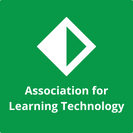Educators have begun to transition to a learner-centred approach, aiming to put individual student needs and interests at the forefront (Alamri et al., 2021). As a result, higher education institutions are increasingly employing technology to personalize students’ learning and master their expertise (Lesser, 2016). Indeed, according to Kara and Sevim (2013), the opportunity and capability to integrate digital tools into the teaching and learning process have truly transformed higher education. The use of such practices has been accelerated, in part, by COVID-19 (e.g., O’Dea and Stern, 2021) as well as pedagogical research (e.g., Armellini and Rodriguez, 2021) and institutions (i.e., Advance HE) advocating for a hybrid and/or blended approach to learning. Such driving forces have subsequently witnessed adaptive learning technologies being classified as one of the six most promising technologies emerging within the higher education setting worldwide (EDUCAUSE, 2020), bringing opportunities to explore new venues for teaching and learning. Many adaptive learning technologies can be implemented by educators in a bid to facilitate student learning. Mastery paths, which can be incorporated into the virtual learning environment of Canvas, are one such adaptive learning technology that has emerged within this practice. The Mastery Path initiative has been running for three years across three subjects and has amassed data from over 1,200 students. The results have been fascinating, with students responding positively and demonstrating the same levels of understanding (and, in some cases, more). However, our focus over the last 12 months has centered on how this initiative has impacted student transitions into tertiary education.
Reference list: Alamri, H.A., Watson, S. and Watson, W. (2021). Learning Technology Models that Support Personalization within Blended Learning Environments in Higher Education. TechTrends, 65, pp. 62-78.
Armellini, A., and Rodriguez, B.C.P. (2021) Active Blended Learning: Definition, Literature Review, and a Framework for Implementation. In: Rodriguez, B.C.P., and Armellini, A. (eds.) Cases on Active Blended Learning in Higher Education. Hershey, PA: IGI Global. Pp. 1-22.
EDUCAUSE. (2020) 2020 EDUCAUSE Horizon Report: Teaching and Learning Edition. [Online] Available at: https://library.educause.edu/-/media/files/library/2020/3/2020_horizon_report_pdf.pdf?la=en&hash=08A92C17998E8113BCB15DCA7BA1F467F303BA80 (Accessed 13th February 2024)
Kara, N., and Sevim, N. (2013). Adaptive learning systems: Beyond teaching machines. Contemporary Educational Technology, 4(2), pp. 108-120.
Lesser, M. (2016). Why we badge: The potential for digital credentials. Education Digest, 81(5), pp. 43–48. O’Dea, X. C., and Stern, J. (2021) Virtually the Same?: Online higher education in the post Covid-19 era. British Journal of Educational Technology, 53(3), pp. 437-442.
Profiles: Matthew Hindmarsh and Clay Gransden
United Kingdom
